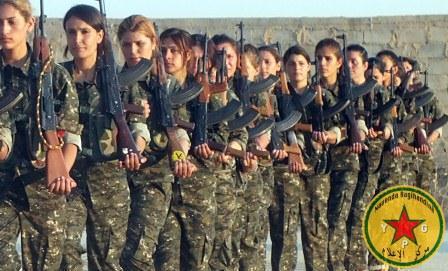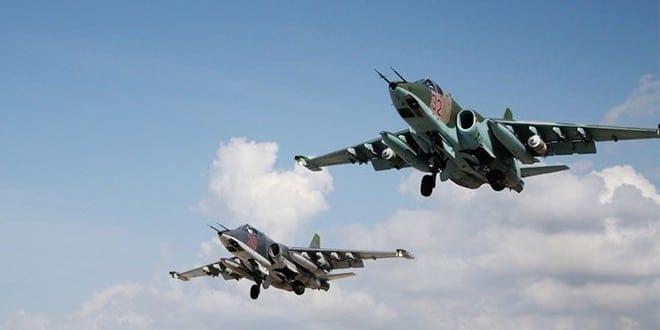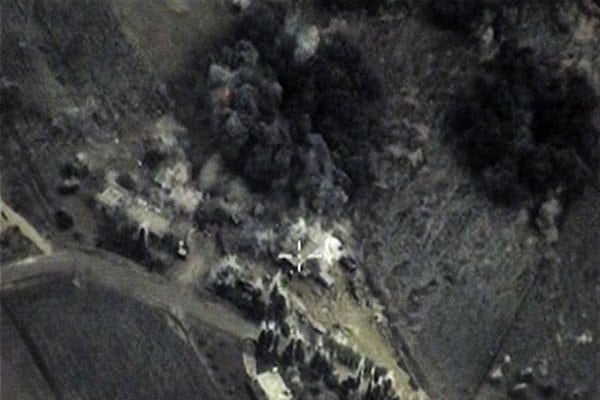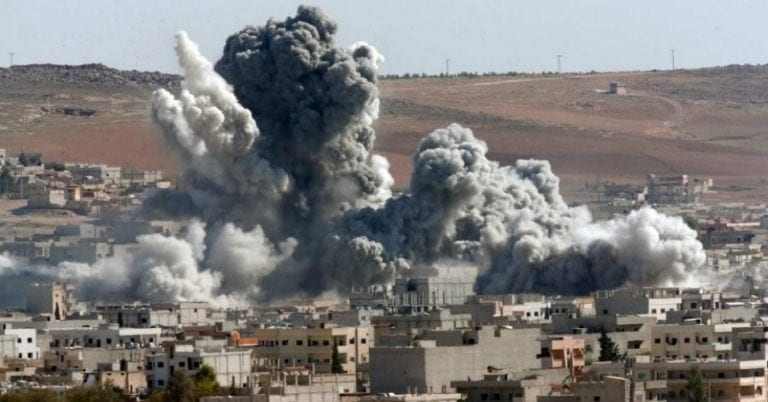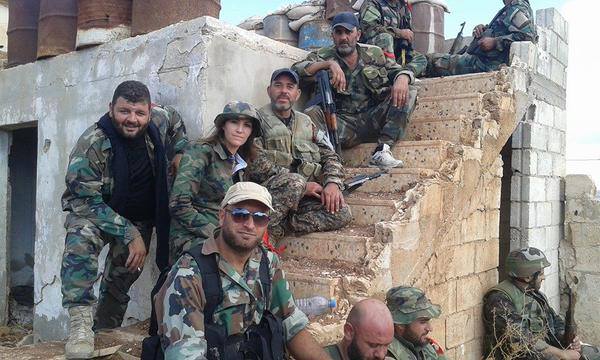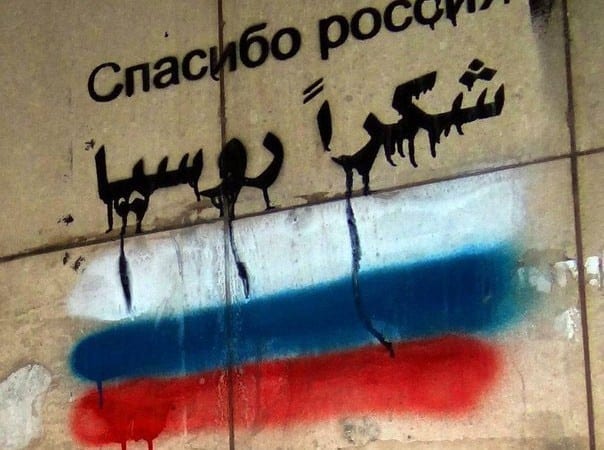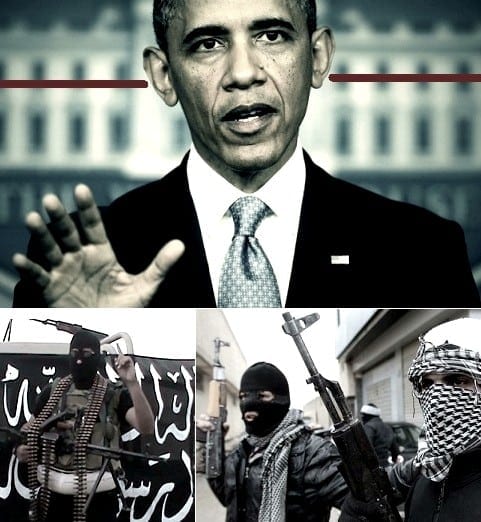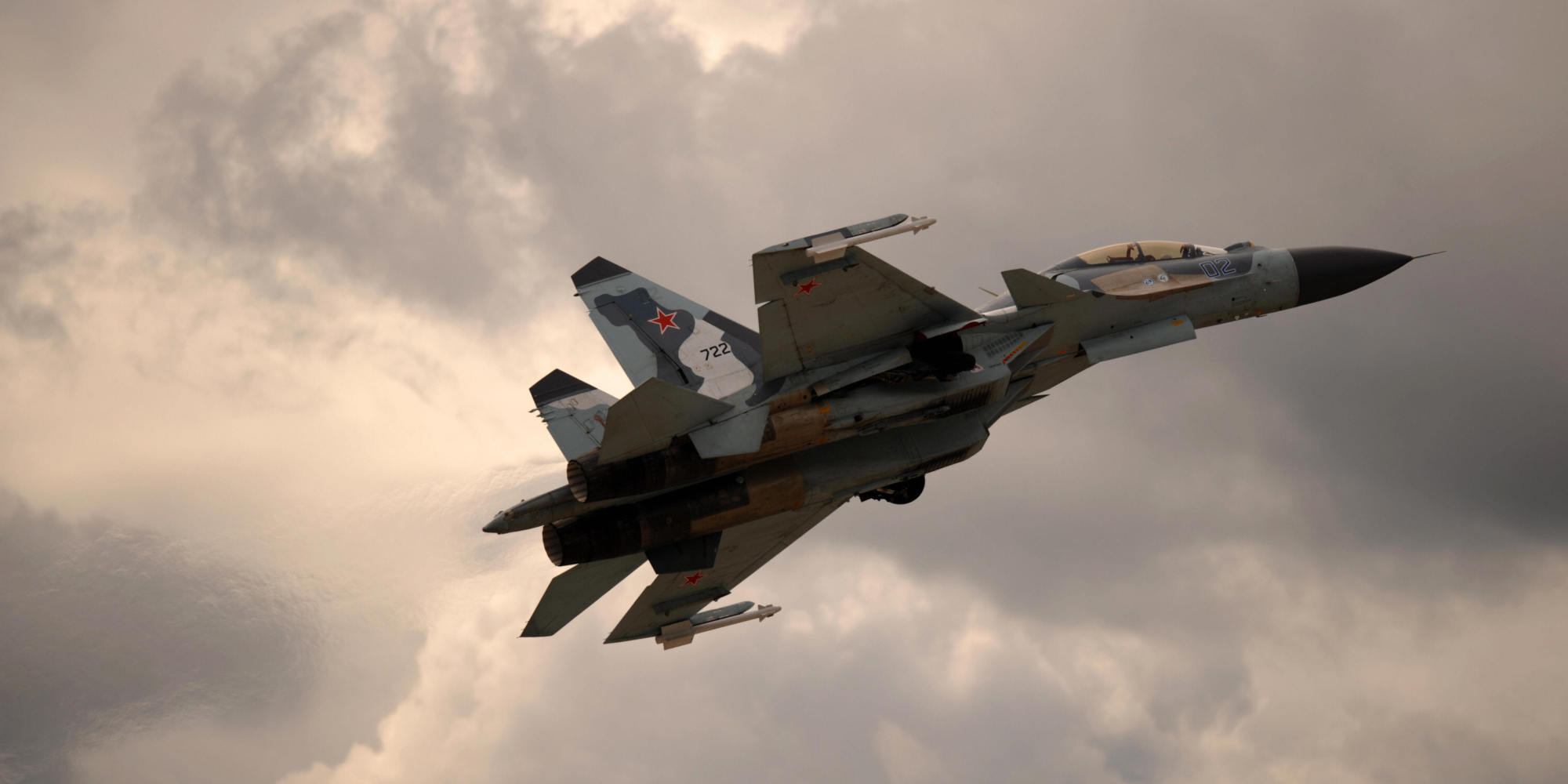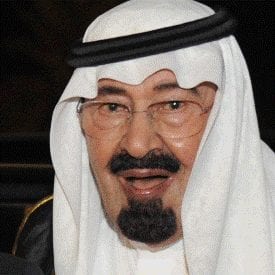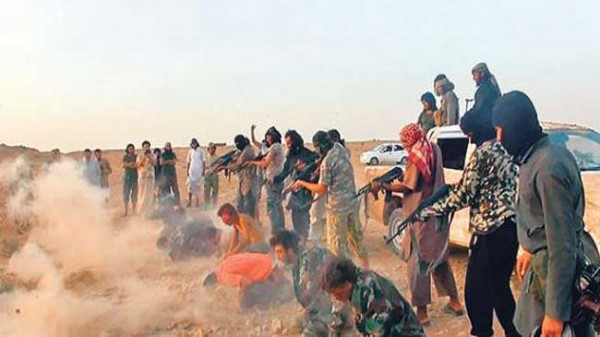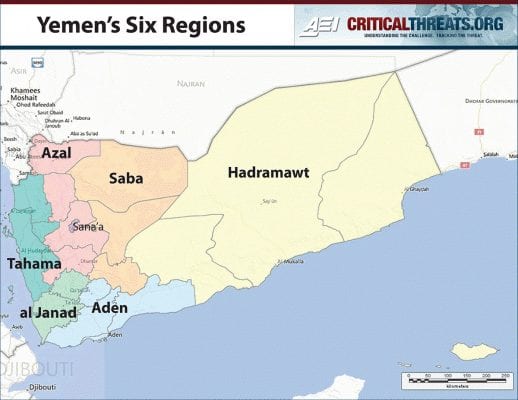Why’s The US Hanging Turkey Out To Dry?
![]()
//
=By= Andrew KORYBKO (USA)
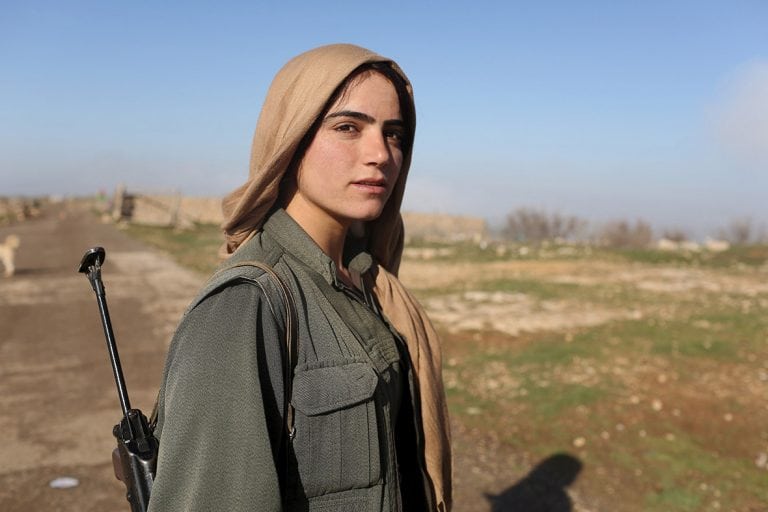
Women play a prominent role in the Kurdish military mobilization. The Kurds have been fighting for their independence for generations, and subjected to numerous betrayals and acts of horrific aggression by the nations they happen to live in.
Turkey’s shooting down of the Russian anti-ISIL aircraft was an unprecedentedly direct aggression against Moscow that trumps even the tense and hostile militarism of the Old Cold War era. The world stands on edge in the immediate aftermath of this attack, with tabloid-esque commentators warning that the beginning of World War III awaits. President Putin, for his part, has been much more measured in responding to the incident, but still couldn’t contain his shock at having received this “stab in the back delivered by accomplices of the terrorists.”
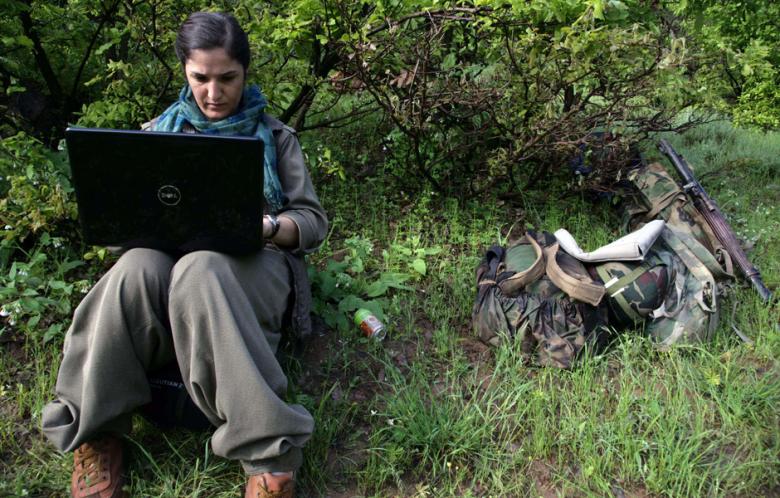
A female Kurdistan Workers’ Party (PKK) fighter works on her laptop after arriving in the northern Iraqi city of Dohuk on 14 May 2013, after leaving Turkey as part of a peace drive with Ankara. The Kurds are recognized as among the bravest and best fighters in the region.
The question now comes down to how Russia will respond to what happened, but perhaps even more important for observers to ponder is why the US is unofficially distancing itself from its ally’s aggression. Despite both NATO and Obama giving full backing to Turkey’s fateful decision, Reuters has quoted an anonymous American military official that purposely leaked that the Russian plane was downed while over Syrian airspace, basing the assessment on heat signature detection. This raises questions about why the US is playing both sides of the fence – on one hand, publicly supporting Turkey, while on the other, strategically releasing information that conflicts with Turkey’s official depiction of events.
The Setup:
[dropcap]T[/dropcap]his dichotomy is suggestive of a Machiavellian plan whereby the US manipulates both Turkey and Russia into behaving according to what it has already forecast as their most likely responses, knowing full well that these could be guided into supporting grander American strategic interests. For starters, the US likely intimated to Erdogan that not only does he have the ‘legal’ right to shoot down any Russian aircraft he chooses, but that the US would actually prefer for him to take this course of action sooner than later. This is reminiscently similar to how the US put Sakkashvili up to bombing Tskhinval and invading South Ossetia – it may not have directly issued an official, on-paper order for this to occur, but it left no ambiguity as to how it wanted its proxy to act in each situation.
According To Plan:
For the most part, this explains the public pronouncements of NATO and the US’ support for Turkey’s actions, and it also goes a long way in soothing Erdogan’s nerves and reassuring him that he did the right thing. The predicted aftereffect of the plane’s downing was an immediate deterioration of Russian-Turkish relations, with the full consequences potentially affecting the diplomatic, military, economic, and energy spheres. Foreign Minister Sergei Lavrov cancelled his upcoming trip to Turkey and advised Russian tourists to refrain from visiting the country due to the terrorism level being similar to Egypt’s. Prime Minister Dmitry Medvedev has spoken about the possibility of barring Turkish companies from the Russian market and cancelling planned nuclear and gas projects with the country.
 All of these prospective actions are fully justifiable and grounded in the self-respect that Russia feels in not aiding what has proven itself to be a militantly hostile state no matter the economic stakes involved, but at the same time, one can’t help but wonder whether this is exactly what the US wanted. There’s no doubt that Russia would react this way, as even a cursory glance of its potential ‘response toolkit’ indicates that these are the most likely to be taken amidst any deterioration of relations. Therefore, it can’t be discounted that the US put Erdogan up to shooting down the Russian jet precisely to provoke the predictable Russian response in threatening to cancel its forthcoming energy projects with Turkey, the core of the strategic partnership between the two. If this is the case, and it certainly seems likely, then it shows exactly how far the US is willing to go to make sure that Russian energy (and subsequently, all of the soft power and multipolar advantages that come with it) doesn’t enter the Balkans through the Turkish Stream megaproject, likely because it understands the transformative impact that this would eventually have on the entire region.
All of these prospective actions are fully justifiable and grounded in the self-respect that Russia feels in not aiding what has proven itself to be a militantly hostile state no matter the economic stakes involved, but at the same time, one can’t help but wonder whether this is exactly what the US wanted. There’s no doubt that Russia would react this way, as even a cursory glance of its potential ‘response toolkit’ indicates that these are the most likely to be taken amidst any deterioration of relations. Therefore, it can’t be discounted that the US put Erdogan up to shooting down the Russian jet precisely to provoke the predictable Russian response in threatening to cancel its forthcoming energy projects with Turkey, the core of the strategic partnership between the two. If this is the case, and it certainly seems likely, then it shows exactly how far the US is willing to go to make sure that Russian energy (and subsequently, all of the soft power and multipolar advantages that come with it) doesn’t enter the Balkans through the Turkish Stream megaproject, likely because it understands the transformative impact that this would eventually have on the entire region.
The Curveball:
[dropcap]T[/dropcap]hus far, everything seems reasonable and well within the realm of predictability, but the curveball comes with the Reuters revelation that an unnamed American military source is essentially saying that the Russian position is justified. Unexpectedly, it now seems as though the US is also playing to Russia’s side to an extent, and this raises questions about what it really wants. After all, it’s been proven beyond any doubt that American-supplied TOW anti-tank missiles were used to down the Russian rescue helicopter that attempted to retrieve the two pilots. With this indisputable evidence of indirect American aggression against Russia, it certainly is a curious fact that the US establishment would purposely leak a statement saying that Turkey downed the Russian plane in Syrian airspace, and basically take Russia’s side on this behind the scenes.
Playing The Kurdish Card:
Explaining this diplomatic twist requires knowledge about the popular response that Russian citizens and global supporters worldwide are requesting to Turkey’s aggression. They quite reasonably propose that Russia intensify its arms shipments to anti-ISIL Kurdish fighters, with the wink-and-a-nod approval that some of them would be siphoned off to the PKK and be used against the Turkish military. This is an effective and pragmatic plan, and in reality, it actually doesn’t even require a policy shift from Moscow because support is already being rendered to some Kurdish groups as part of their joint cooperation in the anti-ISIL struggle. The Kurdish Insurgency hasn’t gone away since Erdogan unwittingly unearthed it this summer as an electioneering tool, and the fact that it’s still going strong even after the elections has scared him so much that he might have been the one who ordered the recent assassination attempt against pro-Kurdish HDP co-chairman Selahattin Demirtas. Thus, if Russia chooses to inflict an asymmetrical response to Turkey by beefing up its indirect support for the PKK and other Turkish-based anti-government Kurds or disrupting Blue Stream gas supplies in order to provoke an intensified rebellion, then it could certainly inflict a heavy amount of strategic damage to Erdogan and increase the likelihood either of a military coup in Turkey (explained more in detail as part of a different article accessible here) and/or the creation of an independent Kurdistan.
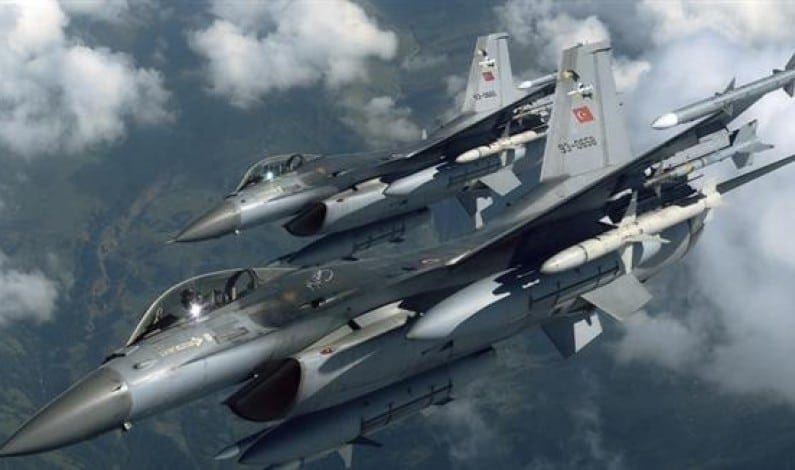
Much of Turkey’s air force equipment has been supplied by the US and the rest of the NATO bloc. The planes have been mostly used to attack Kurdish fighters engaged in combatting ISIL.
That being said, the US has traditionally been the out-of-regional power that has the greatest interest in Kurdistan, seeing the possible state as a ‘geopolitical Israel’ from which it can simultaneously exert influence on the rump portions of Turkey, Iran, Iraq, and Syria. The strategic trajectory of a theorized Kurdish state has been complicated by the anti-ISIL campaign, however, since many Kurds have shown themselves to be pragmatic in cooperating with Russia and Iran against this shared threat. The positive multipolar cooperation that each of these countries has engaged in with the Kurds challenges the US’ planned hegemony over them and their territory, and it thus means that any forthcoming independent Kurdish political entity could theoretically go either towards the multipolar or the unipolar camps. At this point in time, and given all of the dynamic military and diplomatic developments of the past couple of months, the loyalty of a future Kurdish state (no matter if its boundaries are confined only to present-day Turkey and/or Iraq) is totally up for grabs, and it’s impossible to accurately forecast which way it will go.
…
[dropcap]T[/dropcap]he strategic ambiguity that this entails means a few things to the US and Russia. For the US, it indicates that the time is now for it to bunker down and support Kurdistan’s independence before it loses the strategic initiative to Russia, which might be moving in this direction (whether formally or informally) out of grand geopolitical spite for Turkey. Moscow, as was just mentioned, seems inclined to hit Ankara where it hurts most, and that’s through supporting the Kurdish Insurgency in one way or another. However, it’s not yet known how far this would go, and whether Russia would pursue this strategy as a form of short-term vengeance or if it would resolutely go as far in recognizing Kurdish Independence if it could ever be de-facto actualized. Of course, Russia wouldn’t do anything that could endanger the territorial integrity of its Syrian, Iraqi, and Iranian allies, but if the Turkish-based Kurds contained their ambitions solely within the borders of Russia’s historical rival, then it might be able to rectify itself with this reality, especially if they even refrain from legal independence and instead seek a sort of broadly de-facto independent federative or autonomous status within a unified Turkey (which could only realistically be brought about by an intensified insurgency and/or a coup in Ankara).
Joining Hands For Kurdistan:
Having explained all of this, it’s now clear that a remarkable convergence of strategic interests has developed between the US and Russia focusing on Turkish-administered Kurdistan. Understanding the changing calculations that Russia may now be having towards this topic as a response to Turkey’s aggression against it, one can’t necessarily preclude the possibility that the Reuters leak was actually a strategic overture to Russia. Washington might be sending a signal that it wants to speak to Moscow about ways to cooperate in this regard, knowing that each of them possibly have an interest now in seeing the proto-state rise to the fore of the global arena. A shared understanding has likely developed by now that a New Cold War competition for Kurdistan’s loyalty could be fought after the entity is legally formalized (whether as an independent state or a de-facto independent sub-state entity modeled off of the Kurdish Regional Government in Iraq), and that the two Great Powers need to put aside some of their differences in joining hands to see this happen first.
Such a strong signal could have been discretely and secretly communicated to Russia via secure diplomatic and intelligence channels, but the reason it was so publicly broadcast via Reuters, the global newswire service, is because the US also wants to send a signal to Turkey as well. Despite taking its side on the matter before the global eye, the US is also “stabbing its ally in the back”, to channel President Putin, by purposely leaking the information that the Russian jet was shot down over Syrian airspace. It’s not news that the US has been unhappy with Erdogan for not behaving more submissively in the past and refusing to blindly go along with the previous plans to invade Syria (rendered useless after Russia’s anti-terrorist military intervention there), so it might be trying to convey the message it’s had enough of his games and is now playing their own in return. Of course, the US has always been manipulating Turkey ever since it joined NATO and allowed the Americans to operate out of Incirlik airbase, but this time, the treachery is being taken to a higher level by implicitly throwing out suggestions to Russia, Turkey’s new foe (and only because the US manipulated Turkey into taking aggressive action against it), that it might want to team up in undermining Ankara’s control over its volatile southeast.
Concluding Thoughts:
[dropcap]I[/dropcap]t can safely be assumed that the US influenced Turkey into shooting down the Russian jet over Syrian airspace, predicting quite accurately that this would immediately lead to the deterioration of ties between the two states. An elementary forecast of the specific counter-measures that Russia may take stipulates that these will likely relate to the diplomatic, economic, and energy sectors, which is just what the US wants. Because of Turkey’s aggression against Russia, the strategic partnership between the two is now broken (although not necessarily irreversibly), and Ankara has become the fourth and perhaps most geopolitically significant member of the anti-Russian Intermarum coalition. Furthermore, Turkish Stream looks to be indefinitely put on hold, thus delaying Russia’s game-changing pivot to the Balkans. While the ‘unintended’ consequence of the crisis has been Russia’s foreseeable and absolutely legitimate decision to deploy the S-400 SAM system to Syria, this in a way also plays to the manipulated Turkish-Russian rivalry that the US wanted to produce in order to solidify the completion of the Intermarum project and simultaneously counter Russia’s growing influence in the Mideast.
The reaction that no one could have predicted, however, is the US purposely leaking comments to Reuters that support the Russian version of events, namely, that the anti-terrorist jet was shot down while flying over Syrian airspace. This completely conflicts with what the US and NATO have said in public, but it shows that the US has had enough time to game out the plane-shooting scenario well in advance, and that it’s playing a sinister divide-and-conquer game against Turkey and Russia. Put in the position where its decision makers are scrambling for responses to the unprecedented aggression against them, Russia can now more easily be led into supporting the Kurdish struggle for sovereignty (whether formally independent or de-facto so) in Turkey, which coincides with one of the US’ premier geopolitical projects.
From an American perspective, a divided Turkey is doubly useful for its grand strategic designs, as the large pro-NATO Turkish military would remain mostly intact, while the US could gain a major base for force projection (both hard and soft) right in between some of the most important states in the region. It can’t, however, go fully forward with this project unless it has the support of the diplomatic leader of the multipolar world, Russia, otherwise Kurdistan will be just as illegitimate as Kosovo is and might not even come to geopolitical fruition if Moscow and Tehran work to stop it.
Seen from the Russian standpoint, the US’ intimations actually seem quite attractive. An increase of Russian support to anti-ISIL Kurdish fighters would be a plausibly deniable but strategically obvious way to funnel weapons and equipment to anti-Turkish PKK insurgents. Weakening Turkey from within would be a strong asymmetrical response to a country that has lately been a major thorn in Moscow’s side, and it might create the conditions either for a military coup against Erdogan, a divide between him and Davutoglu (which could be used to Russia’s diplomatic advantage so long as the constitution remains unchanged and Davutoglu legally remains more powerful than Erdogan), or a weakening of Erdogan and a tempering of his anti-Russian and anti-Syrian positions.
Importantly, the emergence of an independent or semi-independent Kurdish entity in Turkey could create a tempting piece of geopolitical real estate in the New Cold War, but of course, it would then be contested between the multipolar and unipolar worlds. Still, however, it would represent a positive multipolar development in the Mideast, since under the present state of affairs, the entirety of Turkish territory is under unipolar control. If a large chunk of it suddenly became the object of competition between both blocs, then it would definitely signify a strategic advancement at the expense of unipolarity. Of equal importance, this would also significantly impact on the Turkish state and whatever government is in power by that time, and it could possibly make it more amenable to returning to the previously pragmatic relationship with Russia and perhaps even resurrecting Turkish Stream.
Therefore, Russia surprisingly has nothing to lose and everything to gain by covertly supporting the Kurdish cause in Turkey, no matter if it’s full-out independence or relatively more restrained autonomy, and even if this objective is shared by the US and done in semi-coordination with it. Turkey would immediately be put on the defensive (although it could try desperately responding by supporting Tatar terrorists in Crimea), the multipolar world have a chance at competing for the loyalty of an ultra-strategically positioned entity, and the consequences that this has for the Turkish government (whether it remains the same or is changed via a [military] coup) could recreate the political conditions for Turkish Stream’s feasibility.
 Andrew Korybko is an American political commentator currently working for the Sputnik agency, and for ORIENTAL REVIEW.
Andrew Korybko is an American political commentator currently working for the Sputnik agency, and for ORIENTAL REVIEW.
Note to Commenters
Due to severe hacking attacks in the recent past that brought our site down for up to 11 days with considerable loss of circulation, we exercise extreme caution in the comments we publish, as the comment box has been one of the main arteries to inject malicious code. Because of that comments may not appear immediately, but rest assured that if you are a legitimate commenter your opinion will be published within 24 hours. If your comment fails to appear, and you wish to reach us directly, send us a mail at: editor@greanvillepost.com
We apologize for this inconvenience.
![]() Nauseated by the
Nauseated by the
vile corporate media?
Had enough of their lies, escapism,
omissions and relentless manipulation?
Send a donation to
The Greanville Post–or
But be sure to support YOUR media.
If you don’t, who will?
